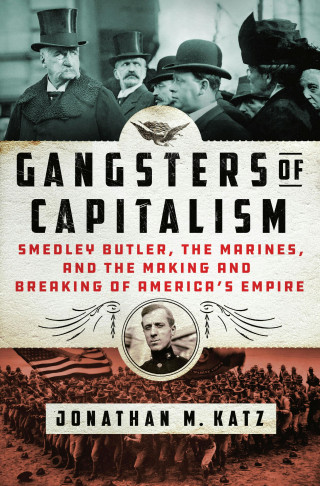David O. Russell’s Amsterdam, a star-studded mystery-comedy set in the heady interwar years of the 1930s, starts with a tagline: “A lot of this actually happened.” It’s a nice trick—a way to harness the narrative power of historical authenticity while giving Russell & Co. license to make up pretty much whatever they want. And fair enough: it’s Hollywood.
But as it happens, I’ve spent most of the last decade researching that period, and in particular the inspiration for one of the movie’s central figures: the real-life Marine Corps Gen. Smedley Butler, who inspired the character played by Robert De Niro. The book that resulted from that research, Gangsters of Capitalism: Smedley Butler, the Marines, and the Making and Breaking of America’s Empire, begins and ends with the real-life version of the high-level conspiracy that gets fictionalized in Amsterdam. In other words, I know which parts happened and which didn’t. (Needless to say, numerous spoilers for the movie follow.)
For me, the main contradiction of Russell’s film is encapsulated in a single, briefly seen piece of wardrobe: the ribbon rack on De Niro’s hanging uniform. Russell’s costume designers meticulously copied Butler’s real-life ribbons—from the baby-blue, star-spangled rectangles that represent his remarkable two Medals of Honor, to his French Ordre de l’Étoile Noire, given after his service in the First World War. But the movie erases what Butler did to earn almost all of those medals and ribbons: a decades-long series of imperialist wars in Latin America and Asia that defined his military career. Far from being an irrelevant detail, that omission goes right to the heart of the filmmakers get wrong about the long-suppressed episode of American history at the movie’s core.
Let’s start at the most basic level. Nearly all the characters in Amsterdam, including the main trio, played by Christian Bale, Margot Robbie, and John David Washington, are completely made up—as is the murder of a retired general that sets the plot in action.
There were certainly thousands of people like those characters: veterans who bore the severe mental and physical scars of the “war to end all wars.” Bale and Washington’s characters are portrayed as having fought with the Army’s 369th Infantry Regiment—a real-life all-Black unit of the segregated Army that served under mainly white officers. Nicknamed the “Harlem Hellfighters,” the real 369th saw intense combat, and, as the movie correctly portrays, all of that fighting was done under a French colonial command because white American troops refused to fight alongside them. The movie’s murder victim—the regiment’s white commander, Gen. Bill Meekins, played by Ed Begley Jr.—is a fictionalized version of the Hellfighters’ real leader, Col. William Hayward. (Taylor Swift plays his fictional daughter.) But Hayward was never murdered. And he had nothing to do with the real-life conspiracy to overthrow President Franklin D. Roosevelt that Butler exposed.

